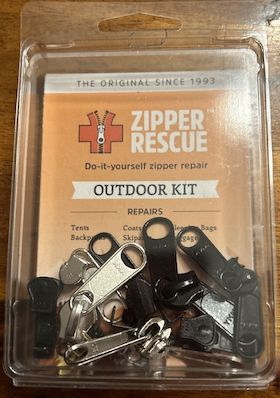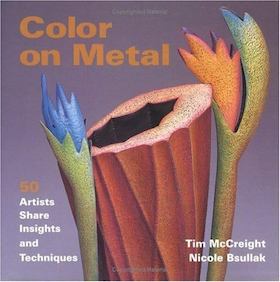
Curated with aloha by
Ted Mooney, P.E. RET

The authoritative public forum
for Metal Finishing 1989-2025

-----
Oxidizing, antiquing, patinating brass zippers
by Robert D. Friedel

on AbeBooks
or eBay or
Amazon
(affil links)
Q. I have received a big assignment from a reputed company in India. they deal in readymade garments and I have to get their jeans zipper's oxidised without the material getting spoilt.
Please advise me if it's possible and the cost for a big consignment approx. 10,000 pieces .
Please revert back ASAP
Thanking you for your kind attention
Warm Regards
Avinash
platers - Mumbai / Maharashtra / India
2000
A. You need to include some important information.
Firstly, what is the metal you wish to oxidize.
Secondly, what color do you wish to oxidize it to. Are you going to relieve it afterwards for an antique finish. What type of sealing material are you going to use: polymer, lacquer, wax, etc. Are you working with assembled zippers or sliders and/or tapes.
All this information is important to know for anyone wishing to give you some advise. If you want some formulas for non proprietary oxidizing baths, refer to the Metal Finishing Guide Book, published by Metal Finishing Magazine. It need not be a current issue, most of the formulations in this section have not changed in over 20 years.
process supplier - Great Neck, New York
Antique Finish on Brass Zip Fasteners
Q. Would like to get hold of a process other than electroplating to achieve antique finish on Brass Surfaces. The Brass surface is that of a zip fastener used in garments. The Antique finish should not wash away and should not stain garments when garments are washed.
Existing non-electrolytic process produces inconsistent results including stripping of the antique layering during washing with standard household detergents.
B.S.SastriTechnical Director - Chennai (Madras), Tamilnadu, India
2003
A. Hello, cousin. They can be 'blackened' then have a tough clearcoat applied. What is your "existing non-electrolytic process" which is not satisfactory? :-)

Ted Mooney, P.E.
Striving to live Aloha
finishing.com - Pine Beach, New Jersey
Want dark green antique on brass zippers
I have some brass zippers that used in fashion clothes like jeans, jackets, etc., I want to dark greenish antique color just in brass metal not in tape. What kind of chemical will work for that application and where would I get it. Thanks
Humayun ZaheerIndustrialist - Lahore, Pakistan
February 1, 2010
A. Try www.archive.org website -there you can find download free (= 0$) old book on metal colouring by Arthur Hiorns (old but still very good book).There are lot of useful formulas for green colouring of copper and its alloys.
Hope it helps and good luck!
- Cerovski vrh Croatia
Q. I've run into this same problem often with our zipper suppliers. They all seem to be using the same manual process to antique brass zippers - The zippers are washed and degreased with hot water and detergent, rinsed, then dipped in a light blue room temperature solution to darken the teeth. I'm no chemist, but the blue solution looks just like the selenious acid antiquing solution often used by hobbyists. It creates a good appearance, but is not at all durable and can create stains in light colored garments. A clear lacquer coating sometimes improves finish durability, but as I'm sure you understand it's hard to glue down a finish that was never properly adhered to the base to begin with. Any ideas for a better process would be appreciated. Thanks!
C.J. Gardener- Charlotte, North Carolina, USA
November 1, 2011
A. Hi C.J.,
There are hot alkaline processes and electroplating processes, but these are expensive and likely destructive to the fabric. But it should be possible to process the sliders separately for a more durable finish.
As for the dip in a blue solution, yes it's almost surely a copper sulfate and selenium dioxide composition. But when "everybody does it", some will always do it better than others. Countless shops use proprietary solutions of such rather than mixing the raw chemicals at a much lower cost, so I think it's possible that the proprietary phosphoric acid and molybdenum and possible other additions achieve something.
And if the process is done on absolutely clean waterbreak-free surfaces, the adhesion will be far better than if the cleaning is only casual. There are many types of clear coats, from lacquer and other 1-part coatings to epoxies and other 2-part coatings, to UV-cured ones.
Luck & Regards,

Ted Mooney, P.E. RET
Striving to live Aloha
finishing.com - Pine Beach, New Jersey
Q, A, or Comment on THIS thread -or- Start a NEW Thread

